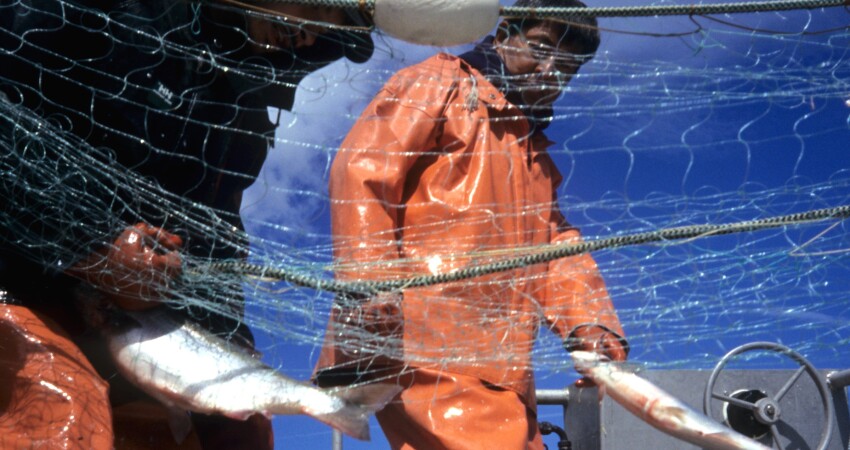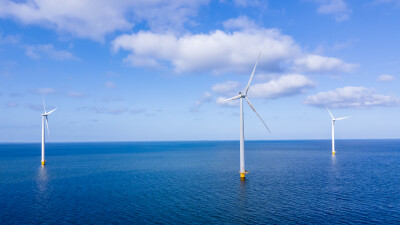The opening of the famed Copper River fishery – it starts this year on May 16 – traditionally marks the beginning of a new commercial salmon season in Alaska.
Rather than excitement, however, much of the industry feels apprehension, anxiety, and even anger. Since last year, we’ve seen a procession of negative and worrying developments, leading some to question the future of the salmon business.
Alaska's seafood industry is floundering due to factors including glutted markets, unfavorable currency exchange rates, post-pandemic consumer shifts, food inflation, and weakness in other important fisheries such as pollock.
Based on preliminary data, prices paid in 2023 to both fishermen and processors were historically low for salmon and pollock, according to a recent analysis prepared for the Alaska Seafood Marketing Institute (ASMI).
In recent months, we’ve seen extraordinary events, including the implosion of legacy processor Peter Pan Seafood and a selloff of Alaska plants by industry titan Trident Seafoods. Other processors have cut back operations. Some Alaska fishermen are wondering if they’ll have a market this year.
Could this be another season of discontent?
Certain forces suggest relief might be on the way. For one thing, the Alaska salmon harvest is expected to be much smaller this year at 136 million fish compared to 232 million in 2023. The catch of sockeye, the most valuable species, is projected at 39 million fish, well below last year’s 52 million. A smaller harvest could help clear salmon inventory and bolster ex-vessel and wholesale prices.
The U.S. Department of Agriculture (USDA) is buying huge volumes of Alaska salmon and pollock, supporting the struggling seafood industry.
The Alaska Legislature is putting together a special task force to address the industry’s problems – problems that could hurt Alaska coastal communities. And legislators are weighing an infusion of up to $10 million in additional support for ASMI. The marketing agency is pursuing new initiatives involving retail heavyweights such as Costco and Walmart, and in Japan, is supporting industry efforts to develop ready-to-eat convenience store products utilizing off-grade or No. 3 salmon.
Coming into this season, processors, in particular, face tremendous financial pressure – and high expectations.
Today, we offer the first of three conversations with top Alaska processing company CEOs.
Silver Bay Seafoods, a mostly fishermen-owned company, started in 2007 with a single salmon plant in Sitka. Since then, it has become a juggernaut with plants around the state. Lately, it has taken the lead in picking up Peter Pan’s plants and fishing fleet.
Cora Campbell, Silver Bay's CEO since 2019, formerly was Alaska’s fish and game commissioner. She agreed to answer our questions about the industry’s struggles and future prospects.
Q: What are the major issues confronting the Alaska salmon industry this season? I’m particularly interested in where we stand with inventory levels.
A: The major issues facing the salmon industry this season continue to be increased costs (labor costs, inflation, shipping and fuel, and interest costs), changes in consumer demand and behavior, and excess inventories from global competition. Some of these issues are outside of the control of the seafood sector or the U.S., but the seafood industry has made progress in areas where we can have an impact. For instance, Alaska’s congressional delegation worked hard to secure a ban on importing of Russian seafood products. The results of this may take some time to be fully realized, but we are seeing some positive activity in domestic markets. Recent USDA purchases of Alaska seafood have provided some help to those processors that had excess inventory. Going into 2024, these factors can only help the Alaska seafood industry.
Q: Is the industry facing a credit crunch? Is bank financing becoming tighter or more expensive for processors? To the extent you as a company have financed fishermen, are you still able to do this?
A: Just like for every other business, the cost of borrowing remains high for the seafood sector. Managing these additional costs carefully is critical for fishermen and processors. The entire supply chain, right down to the consumer, has higher costs of borrowing, meaning less money is available for purchasing and holding seafood inventories.
Q: What is the environment for salmon ex-vessel prices heading into this season? Should fishermen temper their expectations?
A: We are meeting with the Silver Bay fleet over the course of the next month and will be providing our harvesters with a comprehensive market update, including what they can expect for ex-vessel prices.
Q: Silver Bay is growing aggressively at a time when the seafood industry is struggling. You’ve recently acquired Trident’s Ketchikan plant, and Silver Bay has taken the lead in picking up Peter Pan’s plants and fishing fleet. How are you financing this expansion, and what does this say about Silver Bay’s view of the future?
A: Silver Bay views the current challenges as an opportunity to strengthen our position through thoughtful planning and strategic investment that will bring additional value to our fishermen partners, our workforce, and communities. Our expanded operations provide fishermen with critical market opportunities, capacity, and services, and support product form diversity, increased throughput, and operational efficiencies that target economic benefits for our fishermen owners.

Q: What can you tell us about future operations at Peter Pan’s King Cove plant?
A: Silver Bay Seafoods finalized the acquisition of the Peter Pan Valdez cannery and the Deming’s, Double “Q” and Humpty Dumpty canned salmon brands. Silver Bay is also leasing the Peter Pan facilities in Dillingham and Port Moller for the 2024 season. Silver Bay Seafoods will be managing operations at these locations for the 2024 salmon season while work on a larger deal continues. These discussions will continue through the summer, and we expect to have more information about long-term plans for all facilities, including King Cove, after the salmon season.
Q: A Joint Legislative Seafood Industry Task Force is being formed. How could this task force best help the industry?
A: I remember attending meetings of the prior Joint Legislative Salmon Industry Task Force in 2002. In that case, there were good policy initiatives by the task force along with the benefit of raising awareness among the public and decision makers about the importance of the industry to Alaska’s communities and economic health. I have high hopes that this task force will do the same and will extend the conversations happening with the Legislature during the current session about prioritizing funding for sound management and enhanced marketing and modifying state programs, such as the commercial fishing revolving loan fund and the seafood product development tax credit program, to support a strong future.
Q: Looking outward, do you see any room for optimism in the Alaska salmon industry?
A: We are clearly optimistic about the Alaska salmon industry – Silver Bay has expanded our programs statewide. The seafood industry has faced challenges before and as an industry we have proven ourselves to be resilient and innovative. At the end of the day, our industry is about harvesting and processing a natural, wild, healthy protein that feeds the world. Looking forward, we believe that core-value proposition will overcome any short-term economic or market conditions.







